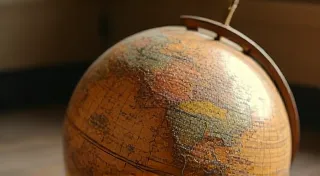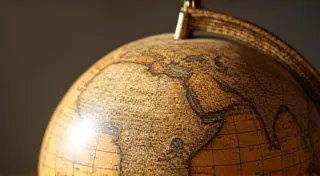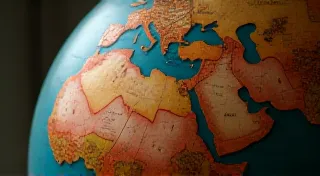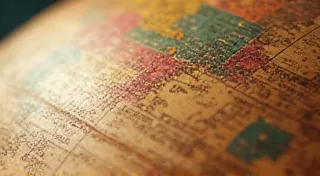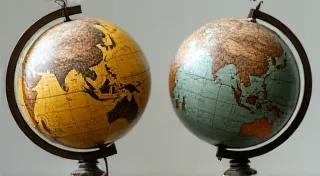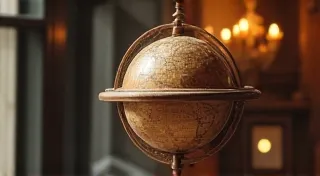Understanding Meridian Bands: Types, Materials, and Restoration
Antique globes are fascinating objects, blending cartography, artistry, and history. A crucial element of their construction and a significant aspect of their restoration is the meridian band – that circular band wrapped around the globe, typically displaying latitude and longitude lines. This article delves into the types of meridian bands found on antique globes, the materials they’re constructed from, and the specific challenges faced when restoring them.
What are Meridian Bands and Why are They Important?
Meridian bands, also known as equatorials, serve as both a functional and decorative component of a globe. They are printed or applied to the globe’s surface, usually displaying lines of longitude and latitude, geographical names, or even decorative cartouches. Without a properly functioning and visually appealing meridian band, an antique globe loses much of its integrity and collectible value. The condition of the meridian band significantly impacts the overall aesthetic and historical significance of the globe, influencing its desirability amongst collectors and institutions alike. Its presence and quality often reflect the globe's era of production and the maker’s level of craftsmanship. The intricate details present on many bands – the precision of the cartography, the artistry of the decorative elements – provide insights into the technological and artistic capabilities of the time.
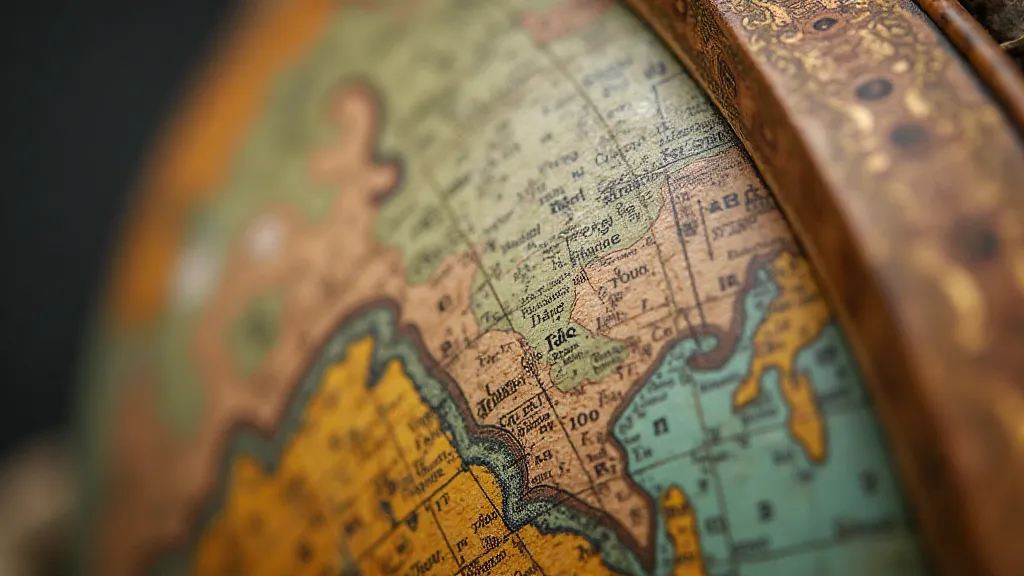
Types of Meridian Bands
The style and construction of meridian bands varied considerably based on the globe’s manufacturer, date of production, and intended market. Here are some common types:
- Printed Paper Bands: These are the most common type, particularly on 19th and early 20th-century globes. They are typically made of thin paper, printed with ink, and adhered to the globe’s surface. The printing techniques varied from simple lithography to more elaborate engraved maps. These printed bands, while relatively common, are often the most fragile and require careful handling during restoration.
- Leather Bands: Found primarily on higher-end globes, leather meridian bands offer a more luxurious appearance and a greater degree of durability. These bands were often tooled or embossed with decorative patterns. The leather's ability to flex and absorb impacts provides a level of protection that paper bands lack, although leather can still suffer from cracking and degradation over time.
- Painted Bands: Less common than printed or leather bands, painted meridian bands can be found on some antique globes, often showcasing artistic embellishments. These are often considered unique pieces, and their restoration often necessitates a specialized artistic skill set.
- Composite Bands: Some globes utilize a composite construction, combining different materials for the meridian band, like paper laminated to cloth or leather. This often was an attempt to combine the advantages of different materials - the detailed cartography of paper with the robustness of leather or fabric.
Materials Used in Meridian Band Construction
The materials employed in meridian band construction heavily influence their condition and restoration needs. Common materials include:
- Paper: As mentioned, paper is the most prevalent material. The quality of paper ranges from cheap, absorbent stock to higher-quality, more durable paper stock. The type of paper used greatly influences its longevity and vulnerability to environmental factors like humidity and light. Identifying the paper type is an important step in understanding the challenges associated with restoration.
- Leather: Generally sheepskin or goatskin, leather bands were prized for their appearance and perceived longevity. Proper leather conservation, distinct from paper restoration, requires specialized techniques and knowledge of leather aging.
- Ink: Early inks were often made from natural pigments and are susceptible to fading and degradation over time. Modern inks offer improved archival qualities, but rarely seen on older globes. The interaction between the ink and the paper substrate is also a key factor in long-term preservation.
- Adhesives: The original adhesives used to attach the bands to the globe are often brittle and prone to failure, requiring careful removal and replacement during restoration. Identifying the original adhesive allows for the selection of compatible, reversible replacements.
Often, the restoration process involves painstaking detective work to understand the original materials used and the techniques employed in the globe’s construction. When sections of the paper are missing, knowing the type of paper allows conservators to select an appropriate archival replacement for reconstruction – a process described in more detail in Replacing Missing Globe Paper Sections: When and How.
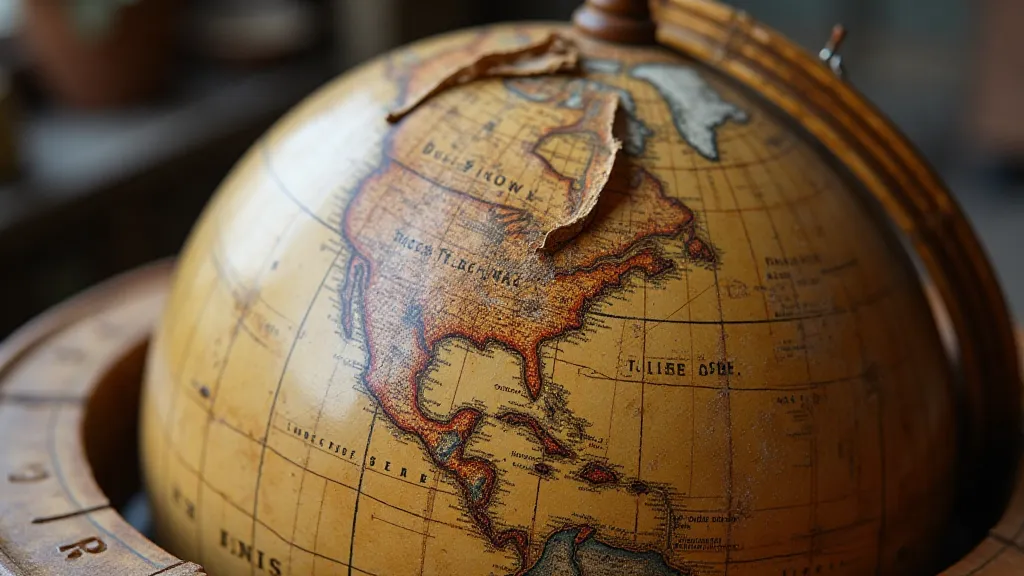
Restoration Challenges and Techniques
Restoring meridian bands is often the most challenging aspect of globe repair. The delicate nature of the materials and the potential for irreversible damage requires meticulous care and specialized techniques. Some common challenges include:
- Ink Fading: Reversing ink fade is often impossible. Conservation efforts focus on stabilizing the existing pigment and preventing further degradation. Sometimes, subtle inpainting techniques are employed to minimize the appearance of faded areas, a process that must be done ethically and with full documentation.
- Paper Loss: Missing sections of the paper band often require painstaking reconstruction using archival paper and careful inpainting techniques. The goal is not to perfectly recreate the lost detail, but to ensure structural integrity and maintain the overall visual harmony of the globe.
- Adhesive Failure: Removing old adhesives without damaging the paper or globe is a critical first step. New adhesives must be compatible with the original materials and reversible for future conservation efforts.
- Cracking and Brittleness: The paper often becomes brittle and cracks easily. Consolidants can be used to strengthen the paper and reduce the risk of further damage. However, these consolidants must be carefully selected to avoid altering the paper's appearance or flexibility.
The ethical considerations that guide the conservation of antique globes are complex and require a deep understanding of historical preservation principles. Any intervention should be minimal and reversible, aiming to stabilize the existing condition rather than attempting to restore the globe to a pristine, original appearance. Detailed documentation of all conservation work is crucial for transparency and allows future conservators to understand the interventions that have been made. These overarching principles are explored further in Ethical Considerations in Antique Globe Restoration.
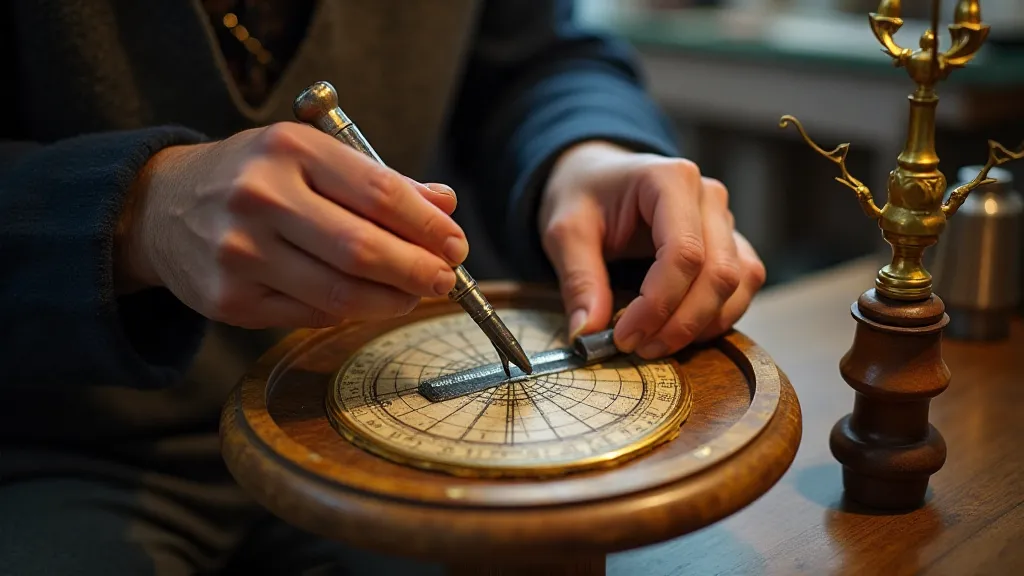
Beyond the Basics: Cartouche Restoration and Preservation
While the meridian band itself is a focal point, the cartouches – those often ornate boxes containing the globe’s title, maker’s mark, and other relevant information – are integral components of the globe's overall artistic and historical significance. When these cartouches are damaged or faded, their restoration can be particularly challenging, requiring an understanding of both cartographic techniques and artistic embellishment. The intricacy of recreating lost details in cartouche restoration echoes the challenges encountered in preserving the entirety of the meridian band itself, often requiring exceptional skills in artistic reconstruction. Those interested in the finer points of this type of work might find The Art of Cartouche Restoration: Recreating Lost Details particularly enlightening.
Conclusion
Understanding the intricacies of meridian bands is crucial for anyone involved in the repair and restoration of antique globes. Recognizing the different types of bands, the materials they’re made from, and the challenges involved in their restoration will ensure a successful conservation outcome and preserve these remarkable historical artifacts for generations to come. The preservation of these intricate objects stands as a testament to our commitment to safeguarding cultural heritage and appreciating the artistry and ingenuity of the past.
